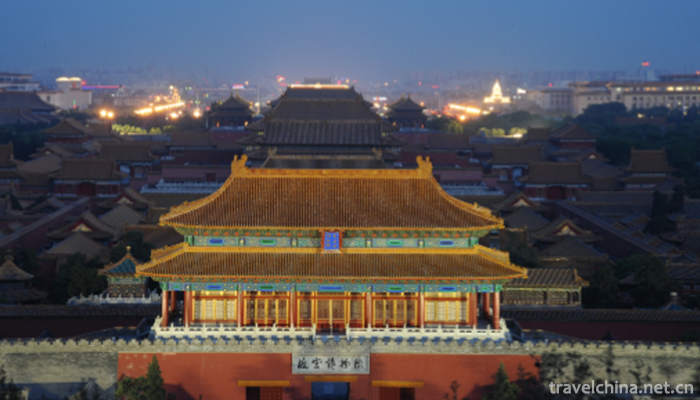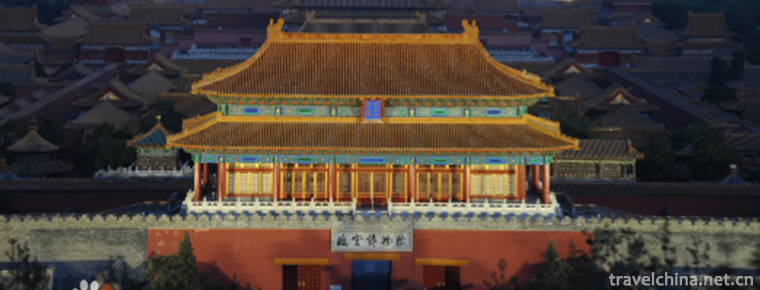Construction Skills of Official Ancient Architecture
Construction Skills of Official Ancient Architecture
In the process of construction and maintenance of the Palace Museum ancient buildings, a complete set of traditional palace building construction techniques with strict shape has been formed on the basis of Chinese ancient building construction technology, which is called "official ancient building construction techniques". This kind of traditional Chinese handicraft not only keeps the original appearance of the Palace Museum, but also directly affects the development of the construction technology of the whole Chinese ancient buildings.
On June 7, 2008, the construction techniques of official buildings were approved by the State Council to be included in the second batch of national intangible cultural heritage projects.
Origin of skills
Various types of work are also mutating or even disappearing. Jin Hongkui, deputy president of the Palace Museum in charge of major repairs, told reporters that the eight major works have shrunk with the shrinking needs of modern society. For example, in the past, timber and steel pipe were used for building materials. In the past, hemp rope was used for binding and screw was changed. In the past, when people had to paste their houses, this kind of work was very developed, even in the Forbidden City, there were few craftsmen in this line.
The handicraft of 2000 years ago is recorded in Kao Gong Ji. Among them, there are the jobs of craftsmen, which belong to the state-run renovation work. The so-called "six state-owned jobs, one hundred workers" system. After the collapse of feudal society, the traditional system of ancient architecture was broken. The Palace Museum seems to be a special case. The constant renovation over the years has provided a small greenhouse-like Society for the inheritance of traditional craftsmen and crafts. But now, one generation of craftsmen is getting old, while the next generation is unable to connect. Jin Hongkui said that although the Palace Museum has a great reputation, it is only an institution under the Ministry of Culture, and there is no mechanism specifically for the inheritance of traditional crafts and craftsmen. "For example, if the Palace Museum wants to recruit, it must be a college graduate or above. What do college students do? This job is blue-collar, not white-collar. But the Forbidden City has no chance to recruit blue-collar workers.
The Palace Museum Renovation Center has restored the traditional "teacher worship meeting" of wood, tile and colour paintings: the apprentices pay respectful tribute to the three worshippers and give them the gift of teacher worship. The masters take up their chairs and receive apprenticeship stickers. On the one hand, they are instructors and witnesses. Can the inheritance of craftsmen, which has been interrupted for half a century in the Palace Museum, continue?
Technical characteristics
The red palace wall separates the traditional and modern world. At the site of the Palace Museum's overhaul, there was no roar of huge cranes or machines. Only workers shuttled between wooden frames, built wood, dug tiles, painted and painted, and carried out the most primitive manual work. In every aspect of overhaul, the selection of materials, craftsmanship and craftsmen strive to follow the traditions of hundreds of years ago. Restoration of the Palace Museum has also become a ritual, a part of the tradition - the "intangible cultural heritage" built on this great material cultural heritage.
This intangible cultural heritage, which has just been listed in the national list, is called "Official Architecture Construction Skills", which includes eight masterpieces of tile, earth, stone, paint and paste, and is subdivided into hundreds of types of work. Ancient buildings under the feudal hierarchy, from materials, colors to practices, must strictly follow the building rules. The Forbidden City, representing the highest level, is undoubtedly the culmination of this set of building techniques.
Chronology succession
"The Palace Museum is a craft, taught orally and heartily by the master, and the apprentice's strength." Li Yongge, Director of Renovation Center, introduced. The renovation centre is located on the West Road outside the Palace Museum. In the unopened buildings which were demolished or renovated, it still maintains its historical continuity in function. It was used as an establishment in the Qing Dynasty to make living utensils for the Royal family. According to the request of Jin Hongkui, Vice President of the Palace Museum, the renovation center has three major tasks. One is the overhaul project, the other is the broken repair and maintenance, which is equivalent to the property of the Palace Museum. The third and most important task is to build the inheritance of craftsmanship and craftsmanship. "Without inheritance, there is no need for a renovation center. Can't I just find a team on the street?"
Repair of Tiredness and Diligence
In the mysterious and quiet northeast corner of the Palace Museum, there is a tired and diligent study. Reporters recently learned from the Palace Museum that the protection project will be launched. It will be the first time in more than 200 years to open to the public after its completion in 2008.
Qiqin Zhai was built during the reign of Emperor Qianlong in the Qing Dynasty (1771-1776). "Emperor Qianlong was knowledgeable and artistic." Huang Ximing, the Ministry of Ancient Architecture of the Palace Museum, said, "Tired Diligence Zhai is a part of a garden with four courtyards carefully designed and built after his abdication. There is a well-preserved stage in the Zhai."
There are very precious historical relics left in Qiqin Zhai, including not only exquisite interior decoration, paintings and calligraphy works, but also interior panoramic paintings and ceiling paintings, which can be called the representative of Qianlong period. They are vivid portrayals of Qing Dynasty emperor's life and palace culture.
Emperor Qianlong then requisitioned the best building materials and craftsmen to build this magnificent palace for himself. "But with the age going on and the natural deterioration of cultural relics'health, many treasures and fine decorations such as bamboo silk mosaics, white jade carvings and silk embroidery on beds have been damaged or even disappeared. The protection work of Tiredness and Diligence is becoming more and more urgent.
The project is carried out jointly by the Palace Museum and the World Heritage Foundation. It is also the first time that the Palace Museum has cooperated with American agencies to protect important buildings in the Forbidden City.


-
1.Wenchang chicken
Hainan Wenchang chicken, special product of Wenchang City, Hainan, China national geographical indication product.
Time 2018-11-05 -
2.Seven Stars Scenic Spot
Seven Stars Scenic Spot/Qixing Scenic Spot is located on the East Bank of Lijiang River in Guilin City, along Xiaodong River, a tributary of Lijiang River, 1.5 kilometers away from the city center.
Time 2018-12-17 -
3.Yanzidong in Jianshui County
Jianshui Swallow Cave is located in the Lujiang River Valley, more than 20 kilometers east of Jianshui County, Honghe Hani and Yi Autonomous Prefecture, Yunnan Province.
Time 2019-01-21 -
4.Mogao Grottoes
Mogao Grottoes, commonly known as Thousand Buddha Caves, are located in Dunhuang at the western end of Hexi Corridor. It was built in the pre-Qin period of the Sixteen Kingdoms.
Time 2019-02-07 -
5.Sun Tzu Cultural Park
Sun Tzu Cultural Park is located in the East New Area of Guangrao County. It has been listed in the "four batches" key dispatching and promotion projects of the Yellow River Delta High Effic
Time 2019-02-13 -
6.The technical skill of penjing
Bonsai art refers to the Soviet bonsai art, which originated in the Tang Dynasty, flourished in the Ming Dynasty, matured in the Qing Dynasty, and developed in modern times. Since the 1980s, Suzhou Bo
Time 2019-06-09 -
7.Pingyao Pushing Lacquerware Decoration Techniques
Pingyao polishing lacquerware decoration technology originated in Pingyao County, central Shanxi Province, and spread to the vast northern region. Lacquerware made with this technique has been well kn
Time 2019-06-09 -
8.Play with cattle
Playing cattle originated from the worship of nature in ancient times. In the era of farming civilization, cattle farming is particularly important for people's production and life. Therefore, through
Time 2019-06-25 -
9.Xinchang tune
Xinchang tune is one of the ancient opera tunes, also known as "falling out of tune", "Shaoxing high-key" and "Xinchang high-key". With Xinchang as the center, it has spr
Time 2019-07-06 -
10.Southwest Minzu University
Make great efforts, and the years will be golden. Southwest University for Nationalities is located in Chengdu, a famous historical and cultural city with the reputation of "the kingdom of heaven
Time 2019-08-31 -
11.Girl on Bridge Hai Lun Tik Tok Songs 2020 Hot Songs
Girl on Bridge is a song composed and sung by Helen and released on November 9, 2019
Time 2020-05-21 -
12.Danba pig leg
Xiang Pigs are mainly green fodder. They never feed artificial feed. They graze with cattle and sheep all year round. They have long mouth and small ears, narrow head, straight forehead, narrow body and protruding back, strong limbs and fast running.
Time 2020-12-06